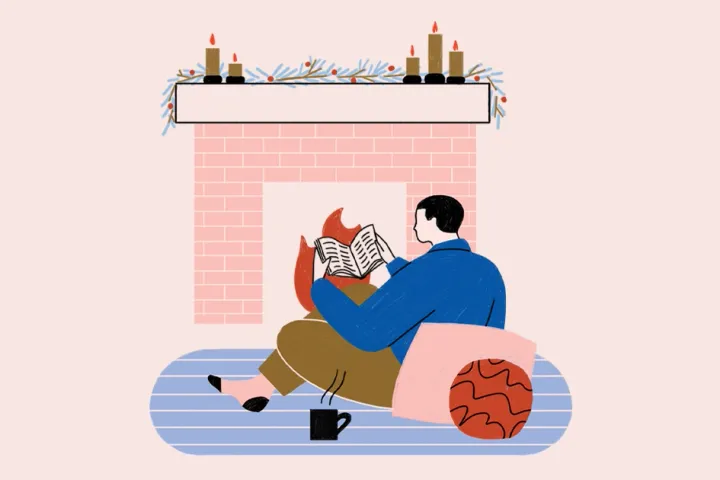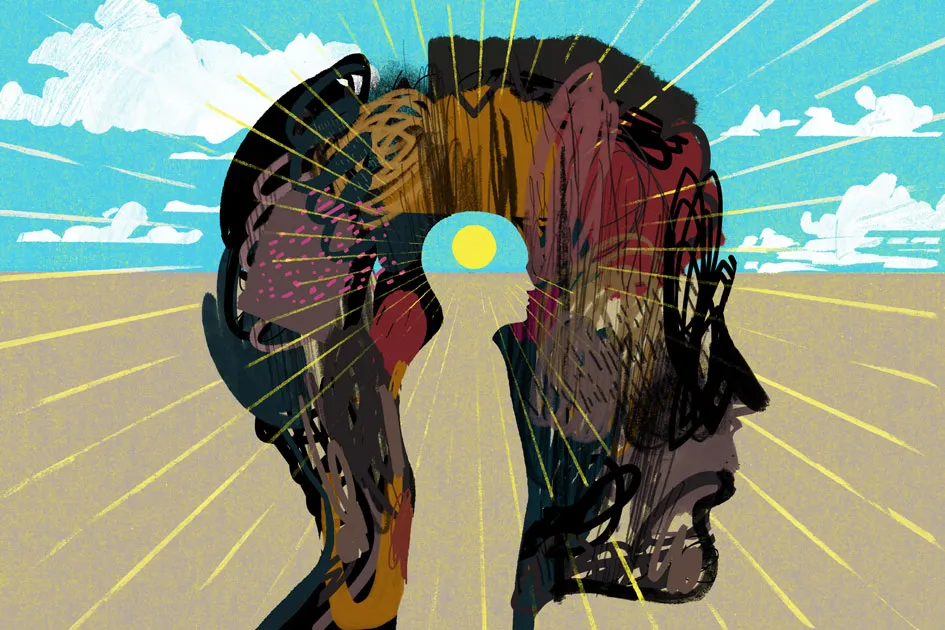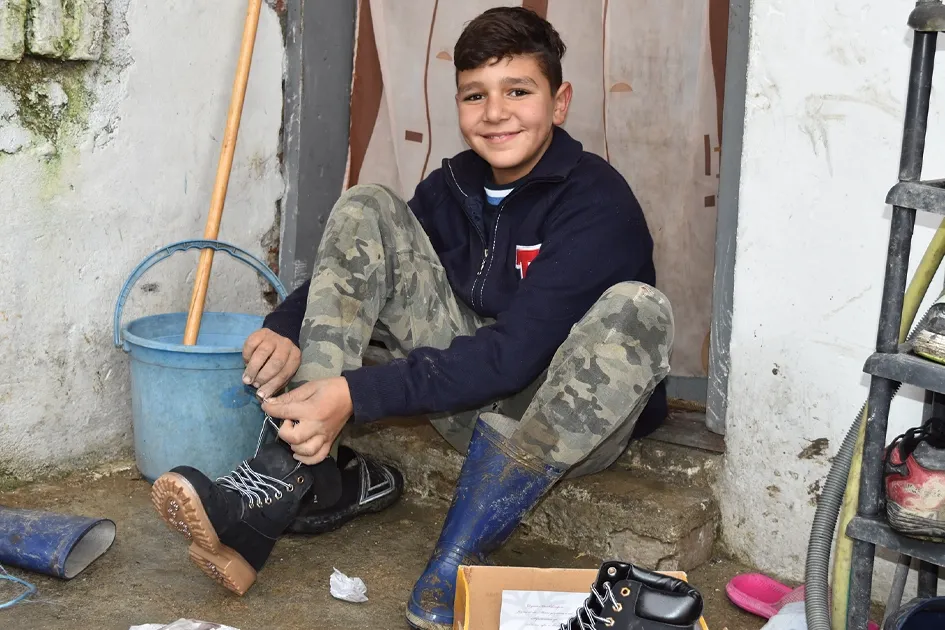How would you describe the neighborhood you grew up in? Perhaps you can relate to the way I think about mine: There was a super-real quality about it, as if details existed in ultra-sharp focus. I knew each sidewalk crack on Highland Avenue, every rosebush up to Hope Street, the pattern of rust flecks on my school’s wrought iron fence. Local landmarks somehow felt like part of who I was—from the bunny chairs at Lad and Lassie Shoes to the A&P food store where I first got to push the cart. And then there was the most magic of magical places: Royal’s Variety (which really did sell penny candy for one cent). It all seemed integral to my identity and a sure foundation under my feet, solid and permanent.

Illustration by Hokyoung Kim
But none of it’s still there. The school and its wrought iron were replaced by Miriam Hospital’s outpatient building. Royal’s gave way to an Indian specialty boutique. Lad and Lassie closed its doors when less pricey self-serve stores began selling shoes. And the A&P became, of all things, a funeral home.
Even so, whenever a visit to Providence is coming up, I find myself anticipating the sights and sounds of childhood. My mouth sometimes even waters for a slice of Art’s pizza or an onion roll from Korb’s—both establishments long since gone. But the truth is, this kind of hankering goes deeper than simply fond memories of tasty treats. It’s a profound yearning for comfort and security, one that can get touched off without a moment’s notice (or a planned trip to New England).
The most recent time this happened was during the initial months of pandemic isolation. Particular foods from childhood kept popping into mind, refusing to be ignored until I had bought, prepared, and consumed them. Things I hadn’t eaten in decades, I suddenly had to have—posthaste: Cheerios (original); tapioca pudding; tuna, mashed potatoes, and canned corn, prepared separately but then swirled together on the plate; my seventh grade go-to sandwich of white bread, tuna, and tomato; our Saturday night supper of hotdog “coins,” scrambled eggs, and ketchup; kasha varnishkes, whose Yiddish name doesn’t do the dish justice; and grilled cheese—I’m not talking garden variety here, but a bona fide KwiKi-Pi. (I actually searched ebay for that brand of sandwich iron and paid the vintage price just to make it!) And I can’t believe I’m admitting this, but I even had to have chicken halafotchka (a label Uncle Hermie invented to capture the unsettling experience of Aunt Cele’s one-pan poultry concoction).
Quenching these cravings was at times complicated, as COVID-19 not only created shortages (among them, plain Cheerios) but also discouraged senior adults like me from browsing the grocery aisles. There must have been a will, though, because I did eventually find a way. And each time, there was something soothing in the familiar textures and flavors.
Well, soothing but transient. After the briefest hint of solace, I’d start to fixate on another childhood food. My desire for the embrace of simpler times was an itch that refused to be scratched. It turns out that what was true of Providence landmarks was also true of comfort foods: As the old saying insists, You can’t go home again.
That’s not even the worst of it. More traumatic than any other letdown is what inevitably happens to the human landscape of our youth. As a kid, I naively assumed all those larger-than-life personalities—my immediate family, my relatives, my best friend Harriet—would somehow always be there. I guess I subconsciously expected a forever support system, or at the very least a stable cast of characters I could count on to stick around.
But as every adult knows, that’s not how life works. People move away, and people die. Interesting, isn’t it, that despite how universal the trauma of loss is, we never get good at it. Of course, we may discover some techniques to survive with fewer bruises next time; we might find ways and words to comfort that feel less awkward than earlier attempts. Yet, when bereavement once again hits close to home, we’re emotionally back to square one, with no way to shorten the learning curve.
Oh, sure, we get used to the “new normal” and find ways to function in it. But all it takes is what grief groups call an “ambush”—a song, a fragrance, or some other unexpected trigger—for the wound to rip open. I’m still surprised, after 8 years without my husband, how often I’m jolted back to reality after my instinctive thought of I can’t wait to tell Elliot … (what our grandchild accomplished/the funny joke I just heard/a troubling news report …). It’s 11 years without my mother, yet that subliminal sense is strong as ever: Mom will love when I tell her what just happened—I can already hear her giggling. And—can it really be 54 years?—I still expect to hear my dad’s laugh during sitcoms. Plus, I really miss his hug.
No, we never fully acclimate when “death do us part.” In fact, far from getting used to the exodus of people we care about, it’s easy to feel increasingly disheartened by the growing tally. After all, challenges tend to increase during the “golden years,” yet in this season when extra comfort or assistance would be appreciated, we typically find our circle of family and friends diminishing.
At times, it feels like more than this frail human frame can bear—especially in those bewildering spells when funerals seem to dot the calendar. Certainly I’m not the only one who’s begged God to slow the migration of people I love and depend on. Or who felt it necessary to inform Him that “Really, Lord, that’s all the loss I can take.”
But what if it’s all part of God’s design—His way of weakening the gravitational pull of earthly life? That might explain why the thought of heaven becomes more alluring with each loved one who takes up residence there.
And maybe, just maybe, I was on to something with my innocent concept of people and permanence. In fact, could that be what Ecclesiastes 3 is hinting at by saying God has “set eternity in the human heart” (v. 11 NIV)? Until recently, I read that verse as metaphor, but the older I get, the more it strikes me as literal. Now I wonder if perhaps my simple childhood assumption was a prophetic gift of sorts—a glimpse into the very real hope of that time when relationships will last forever. A time when loss will be a thing of the past.





